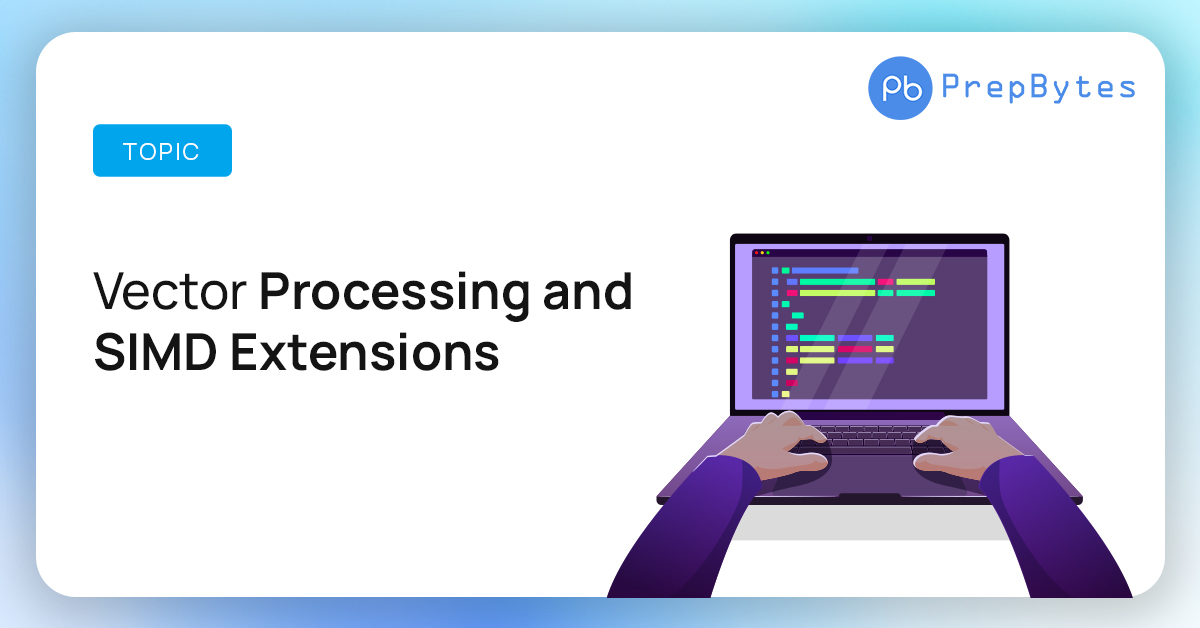Last Updated on August 9, 2023 by Mayank Dham

The holy grail of computing in today’s fast-paced world is blazing-fast speed. Here are two cutting-edge technologies that are revolutionising how computers perform difficult computations and enormous data sets: vector processing and SIMD extensions. We’ll go further into the ideas of vector processing and SIMD extensions in this essay, illuminating their importance and their effects on a variety of applications.
What is Vector Processing?
The game-changing breakthrough of vector processing involves carrying out the same action on numerous data items at once. Vector processing, which allows a single instruction to operate on an entire array or vector instead of doing it sequentially, significantly increases processing speed. Tasks requiring data-level parallelism, such as scientific simulations, mathematical calculations, and multimedia processing, benefit greatly from this methodology.
Specialised registers called vector registers, which have the capacity to store numerous data components, are at the core of vector processing. Vector processors greatly decrease instruction overhead and maximise resource utilisation by processing a single instruction across all parts of a vector at once, resulting in unmatched performance benefits.
Exploring the Power of SIMD Extensions
The processors’ turbochargers, SIMD (Single Instruction, Multiple Data) extensions, are here. A single instruction may be broadcast to numerous processing units thanks to SIMD, which significantly increases the capabilities of processors. The operation is then carried out by these units in unison on each of their respective data items. Various processor architectures, including the x86 (SSE, AVX), ARM (NEON), and PowerPC (AltiVec), are characterised by SIMD extensions that offer specialised instructions that work on packed data—multiple data components grouped together.
Benefits and Applications of Vector Processing
Benefits and Applications of vector processing are given below:
Unparalleled Performance: Processing numerous data pieces in a single command greatly speeds up computation-intensive processes. Applications that handle images and videos benefit greatly from this increased performance.
-
Energy Efficiency: As operations are performed more quickly, the effectiveness of parallel processing lowers energy consumption, allowing processors to remain in low-power modes for longer.
-
Scientific Prowess: Vector processing and SIMD give scientific simulations a level of computational capability never before seen in fields like weather forecasting and computational fluid dynamics.
-
Multimedia Marvels: The real-time capabilities provided by SIMD technology enable the flourishing of video editing, audio processing, and visual rendering.
-
Gaming Galore: The complex visuals and physics engines used in modern gaming require a lot of computing power. Gamers’ favourite smooth gameplay and realistic visuals are made possible with SIMD extensions.
-
AI and Machine Learning: Some machine learning algorithms take advantage of SIMD to speed up training and inference, particularly those that use matrices and neural networks.
Navigating Challenges and Considerations
-
Optimised Coding: Careful code optimisation is necessary for effectively using SIMD instructions. Algorithms must be designed to maximise parallelism and data must match the capabilities of SIMD units.
-
Portability Puzzle: SimD extensions differ amongst CPU architectures, which might result in non-portable code. Compiler directives and abstraction libraries are some solutions.
-
Maintainability Maze: Highly optimised SIMD code may be complex, making it difficult to design and debug applications.
Conclusion
The dynamic combo combining vector processing and SIMD extensions is boosting computing performance in a variety of applications. Processors can work with complicated computations and data sets with a level of efficiency never before achieved because of their capacity to handle many data components in parallel. Vector processing and SIMD extensions are primed to continue changing the computer environment as technology advances, opening up new vistas of potential in a variety of fields.
FAQs related to Vector Processing and SIMD Extensions
1. What are the benefits of using SIMD Extensions?
SIMD Extensions offer benefits like enhanced performance, reduced energy consumption, improved efficiency in scientific computing, seamless multimedia applications, smoother gaming experiences, and accelerated machine learning tasks.
2. Are SIMD Extensions compatible with all processor architectures?
No, SIMD Extensions are architecture-specific. Different processor families have their own set of SIMD instructions. For example, x86 processors use SSE and AVX, ARM processors use NEON, and PowerPC processors use AltiVec.
3. How are SIMD Extensions used in multimedia applications?
SIMD Extensions accelerate multimedia tasks like image and video processing by processing multiple pixel or audio samples simultaneously. This leads to smoother playback, faster rendering, and more efficient compression and decompression.
4. Can SIMD Extensions improve scientific simulations?
Yes, SIMD Extensions can significantly enhance the performance of scientific simulations, especially those involving large datasets and complex calculations. They allow simulations to process multiple data points concurrently, leading to faster results.
5. What challenges are associated with SIMD programming?
Optimizing code for SIMD can be complex. It requires careful data alignment, instruction scheduling, and loop restructuring to fully exploit SIMD capabilities. Additionally, maintaining highly optimized SIMD code can be challenging for software developers.


